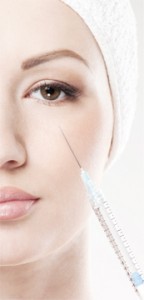 Botox is arguably the most widely popular non-surgical anti-aging treatment in the world today. Ever since the Botox treatment was approved by the FDA in 2002 for cosmetic reduction of wrinkles and fine lines from certain areas of the face, it has been used by millions of patients with excellent results.
Rejuvenate Medical Spa, led by Dr. Bijan Farah, is a premier provider of Botox treatments to patients in Encino, Sherman Oaks, San Fernando, Calabasas, CA, and other areas. The med spa provides a range of latest non-invasive and minimally invasive aesthetic solutions in a state of the art, safe, and friendly environment.
Botox is arguably the most widely popular non-surgical anti-aging treatment in the world today. Ever since the Botox treatment was approved by the FDA in 2002 for cosmetic reduction of wrinkles and fine lines from certain areas of the face, it has been used by millions of patients with excellent results.
Rejuvenate Medical Spa, led by Dr. Bijan Farah, is a premier provider of Botox treatments to patients in Encino, Sherman Oaks, San Fernando, Calabasas, CA, and other areas. The med spa provides a range of latest non-invasive and minimally invasive aesthetic solutions in a state of the art, safe, and friendly environment.
 Botox is arguably the most widely popular non-surgical anti-aging treatment in the world today. Ever since the Botox treatment was approved by the FDA in 2002 for cosmetic reduction of wrinkles and fine lines from certain areas of the face, it has been used by millions of patients with excellent results.
Rejuvenate Medical Spa, led by Dr. Bijan Farah, is a premier provider of Botox treatments to patients in Encino, Sherman Oaks, San Fernando, Calabasas, CA, and other areas. The med spa provides a range of latest non-invasive and minimally invasive aesthetic solutions in a state of the art, safe, and friendly environment.
Botox is arguably the most widely popular non-surgical anti-aging treatment in the world today. Ever since the Botox treatment was approved by the FDA in 2002 for cosmetic reduction of wrinkles and fine lines from certain areas of the face, it has been used by millions of patients with excellent results.
Rejuvenate Medical Spa, led by Dr. Bijan Farah, is a premier provider of Botox treatments to patients in Encino, Sherman Oaks, San Fernando, Calabasas, CA, and other areas. The med spa provides a range of latest non-invasive and minimally invasive aesthetic solutions in a state of the art, safe, and friendly environment.
